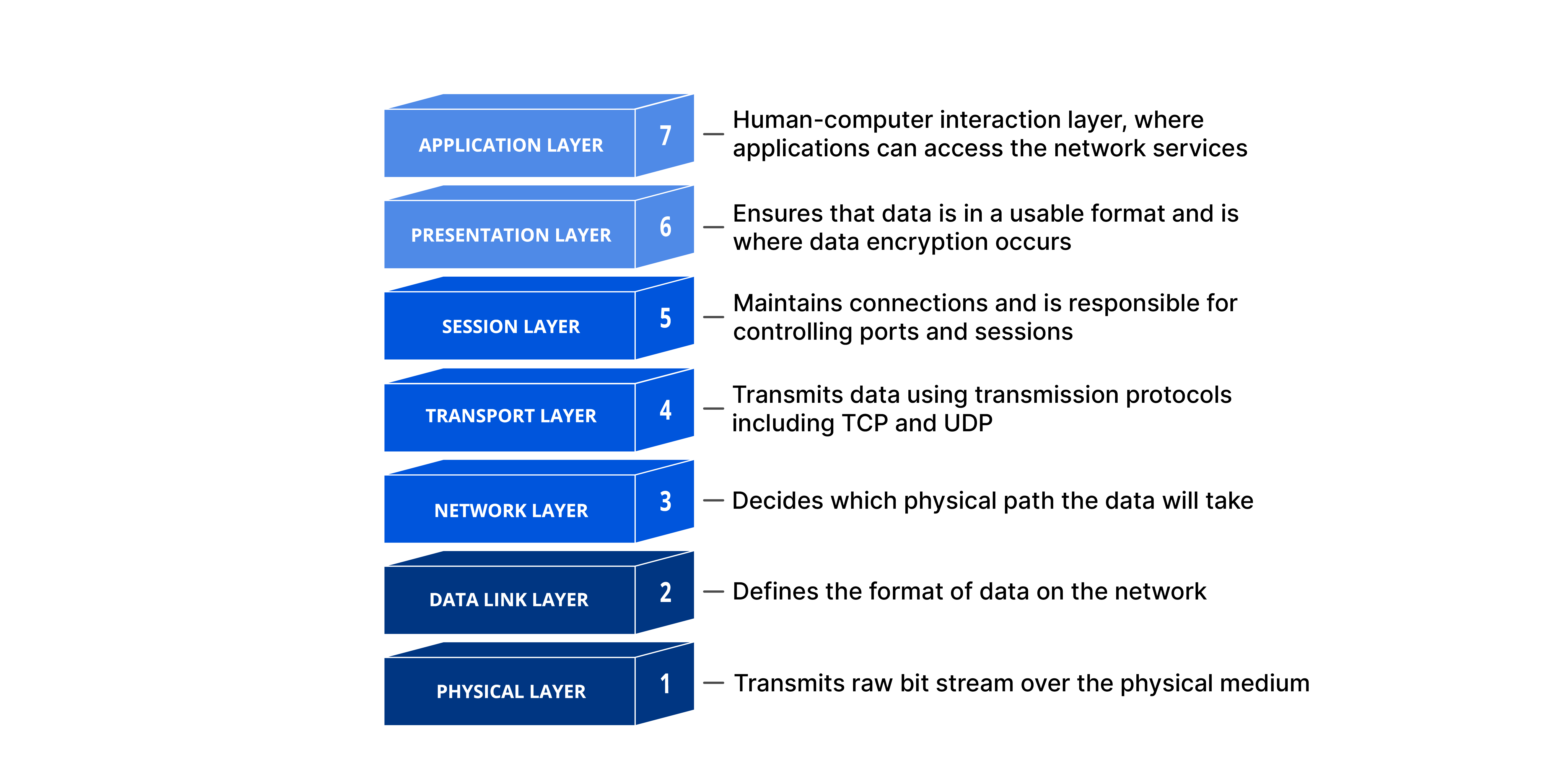The OSI (Open Systems Interconnection) model is a conceptual framework used to understand and implement standard protocols in network communications. It was developed by the International Organization for Standardization (ISO). The OSI model categorizes the functions of network components, rules, and requirements needed to make a communication network. It can be called a universal language for computer networking. OSI model visualizes the flow of data from the sender device to the receiver device by using 7 layers. Each layer contains its own job to be done before sending data to the next layer.
Application layer - Layer 7
This is the closest layer to the end user and initiates communication between users and applications such as web browsers and email services. In the process of this layer, syntaxes are converted into data that is human-readable. The application layer uses SMTP and HTTP protocols to communicate.
Presentation layer - Layer 6
The primary purpose of this layer is to prepare the data for the application layer. When two devices communicate this layer encrypts, decrypts, and compresses data. This layer provides decrypted data, and readable data to the application layer. when the data is sent to the 5th layer data is encrypted and compressed in this presentation layer to improve the speed and minimize the amount of data that will be transferred.
Session layer - Layer 5
The session layer is used to handle the opening and closing of network communication between two devices. This layer ensures the session is open enough time to transfer all the data being exchanged, and promptly close the session to avoid any westings. The session layer uses the checkpoint method to transfer data. That means while transferring data it saves the checkpoint by checkpoint. In case the connection crashes or is disconnected while transferring data, It can continue the transfer again from the last checkpoint. Unless have to transfer the entire transfer again.
Transport layer - Layer 4
In this layer, data breaks into segments before sending into layer 3. This layer reassembles segments into data before being sent to layer 5. The transport layer checks the data is successfully delivered. Unless this layer requests a retransmission. This layer includes TCP and UDP protocols to work.
Network layer - Layer 3
This layer facilitates the transfer of data between two networks. If the communicating devices are in the same network, there is no need for this layer. The network layer divides the segments that come from the transport layer into small pieces. These are called packets. Also, this layer converts packets into segments to send to the transport layer. The network layer figures out the best physical path to reach the destination of its data. This is called routing.
Data link layer - Layer 2
This layer is like the network layer except the data link layer facilitates data transfer between on same network. This layer takes the packets from the network layer and again breaks them into pieces. That is called frames. Also, this layer handles the flow and error control.
Physical layer - Layer 1
This layer includes physical equipment used to transfer data. Such as switches, cables, radio frequency used for data transfer, Wi-Fi, and physical structures. The physical layer converts data into bits that only contain 1 and 0.
***








0 comments:
Post a Comment